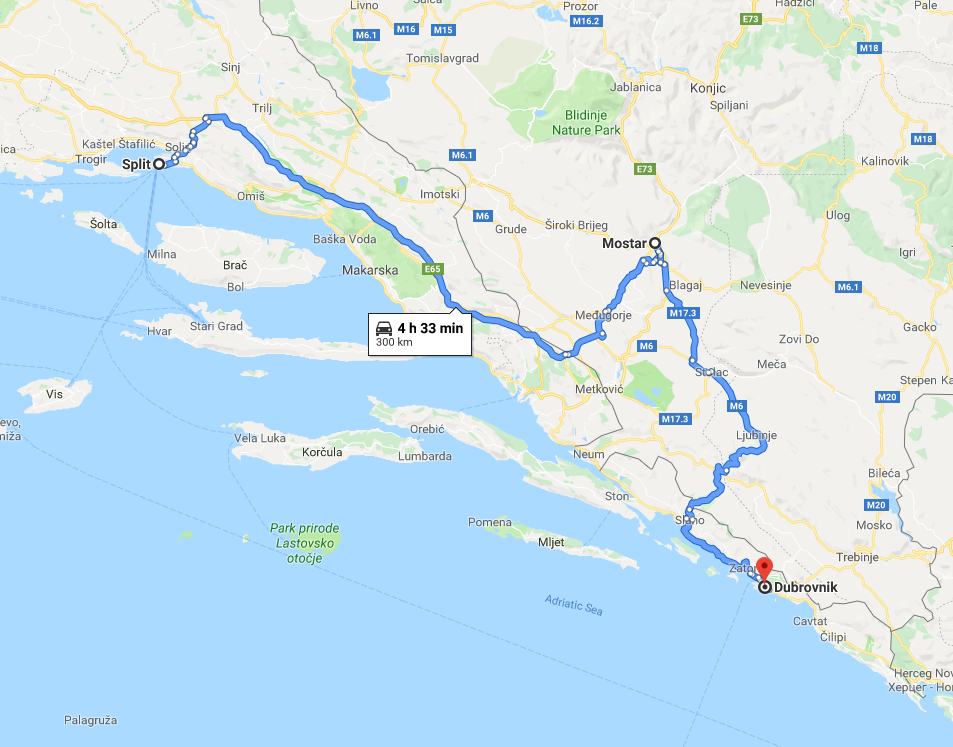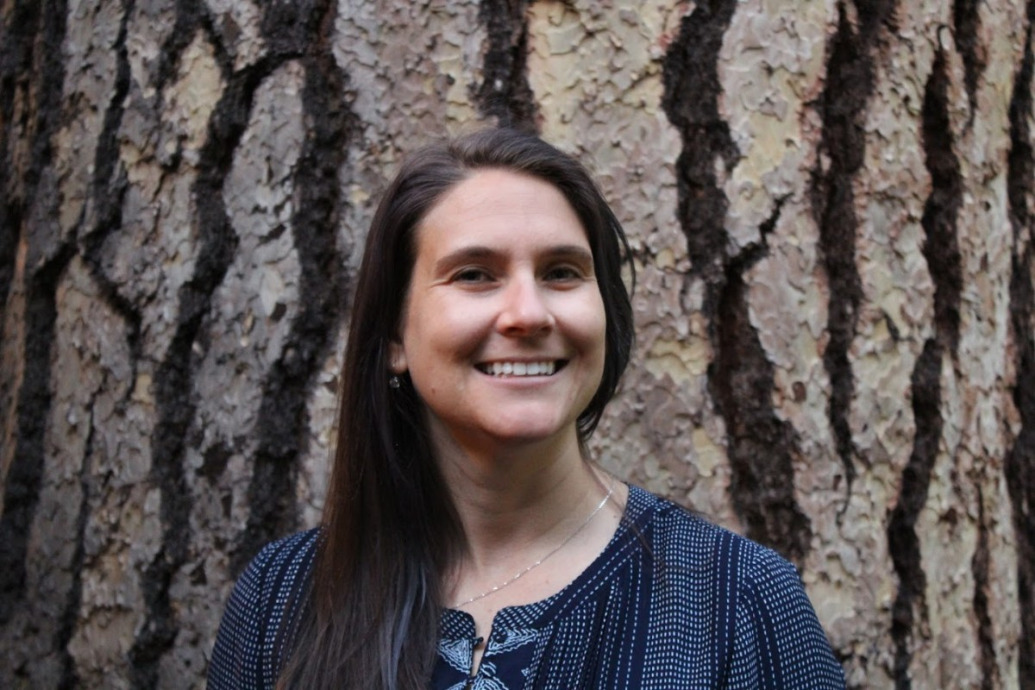Leaving Split (after figuring out payment for parking) by 1000, we got a fairly early start to Mostar and the 4th country on our road trip – Bosnia and Herzegovina. The road out of Split cut inward on the windy and high highway we came in on (and this time we actually got to see it during daylight). Back on the Croatian main highway/toll road, we cruised until we cut north towards Mostar. That plan was to spend a few hours in Mostar, and then continue to to Dubrovnik for the evening. As you can see from the map, Bosnia and Herzegovina has a tiny piece of coastline (a town called Neum) that separates both parts of Croatia. We later learned this was on artifact of how Marshall Tito drew the state lines during the time of Yugoslavia. Oddly, it wasn’t contest by Croatia during the 1990s Balkans Wars,

As soon as we turned off towards Mostar, the border crossing was upon us. It took a while sitting in a long line (over an hour), and we had to pay a 5 Euro entrance fee at a separate checkpoint, which we think was really just a bribe for the immigration official. He specifically asked for paper (bills), and not metal (coins). The Bosnian official never actually stamped our passport to show entrance either. Dodgy.
On the Bosnia and Herzegovina side, the roads immediately took a turn for the worse, but were still OK. We had been spoiled by the new Croatian toll road system. We had to take smaller roads in to Mostar and went through countryside and small villages along the way. It looked noticeable poorer, but not a whole lot different, and the people looked the same as in Croatia.
Google wanted us to take a different route than conflicted with the signs we saw to Mostar, and Brendan and I got in a fight about it. Ultimately, I think we followed Google. It got us there, but the roads were slow and and small.
Once in Mostar, we had to find parking, which took us about 10 minutes to figure out. Brendan had read to park on the west bank of the river, so we made it over there and looked around, following some signs we saw for parking. Nothing looked available so we continued on, back, to the main road, until we came upon a parking lot which looked good. We easily found a spot and rearranged our luggage so that everything would fit in the trunk. Brendan went to an ATM to get some Bosnian and Herzegovina marka (and then to a gas station to break the change) to pay the parking machine and get a ticket. We put in enough for 2 hours. It was only a couple of marka, and the currency conversion rate was favorable for us – 1.7 marka to the USD. In general we found Bosnia and Herzegovina to be cheap compared to Slovenia and Croatia.
Then we set out for the Mostar old town area, which was about a 10 minute walk from our car. Our first mission was to find a nice Herzegovina lunch near the Neretva river.

Over our traditional Bosnian meal including beer and cevapi (those ground, spiced beef rolls), we discussed the history a bit.
Mostar is the most important cities of the Herzegovina region (in the south) of the country. The political division and governance lines across the country is incredibly complicated due to the ethnic conflicts and partitioning done from the time of Yugoslavia through the end of the Balkan Wars. Bosnia and Herzegovina itself is divided into three territories that are fairly autonomous – the Federation of Bosnia and Herzegovina (this is further divided into 10 cantons), the Republika Srpska, and the Brčko District governed under local government. Bosnia and Herzegovina has a bicameral legislature and a three-member Presidency composed of a member of each major ethnic group (Serbians – Eastern Orthodox, Croats – Catholics, and Bosniaks – Muslims). Driving around the countryside, we observed more loyalty to the territorial division than to the country Bosnia and Herzegovina. This made us wonder whether another war, conflict, or independence movement may come again.
Mostar is both in Herzegovina (which is not a political entity but is more of a historical territorial description) as well as the Federation of Bosnia and Herzegovina, and it the majority of the population is Bosniak (Muslim). The neat think about Bosnia and Herzegovina, and where it diverges from the history we learned about while visiting its neighbors Croatia and Slovenia, is that the Ottoman Turks ruled for about 400 years – 15th to 19th century, in Place of the Slavs, Venetians or French like we saw in the other countries. The architecture certainly reflects the Islamic influence and makes this country an East meets West confluence.
We spent the rest of our time meandering through the old city – overrun on this day with tourists (particularly Chinese). The bazaar appeared to only exist for tourists at this point as there were no local elements (fruit or vegetable markets, grocery stores, etc.). We read later that tourism is the most important industry in Mostar.
Stari Most (the Old Bridge) is the most architecturally significant attraction in Mostar, and is an example of Ottoman architecture in its prime.
We waited around for a bit so that we could watch a diver on the bridge jump. Later, we discovered if he earned enough money through donations, we would eventually jump. No such luck for us, and we didn’t have time to wait.
We kept moving across the bridge (which was very slippery cobblestone) to the east bank of the river. You could see the mosques in the distance.

The bazaar continues across the river, where some of the fancier restaurants are located by the waterfront.



At the edge of the bazaar, we turned back and headed for the river beach on the west bank for some better pictures of the Old Bridge.



It was time for us to go so we retraced our steps west through the bazaar one last time. Compared to the Khan al-Khalilis in Egypt or even the Dilli Haut in New Delhi, this one had nothing very special to offer and it was a “safe” version for tourists. We did see some art we liked, but most of it was cheesy renditions of the bridge.

We passed by some bombed out buildings on the road near our parking lot and we speculated as to whether they were just run down, or if they had been destroyed during the Balkan War.
Our car was safe and sound and we were ready to continue on to Dubrovnik, and see more of the Dalmation Coast.
Verdict: See Mostar as a day trip. Min 2 hours Max 4 hours.











[…] out of Mostar, we decided to follow Google Map’s routing instructions for the driving to Dubrovnik – […]